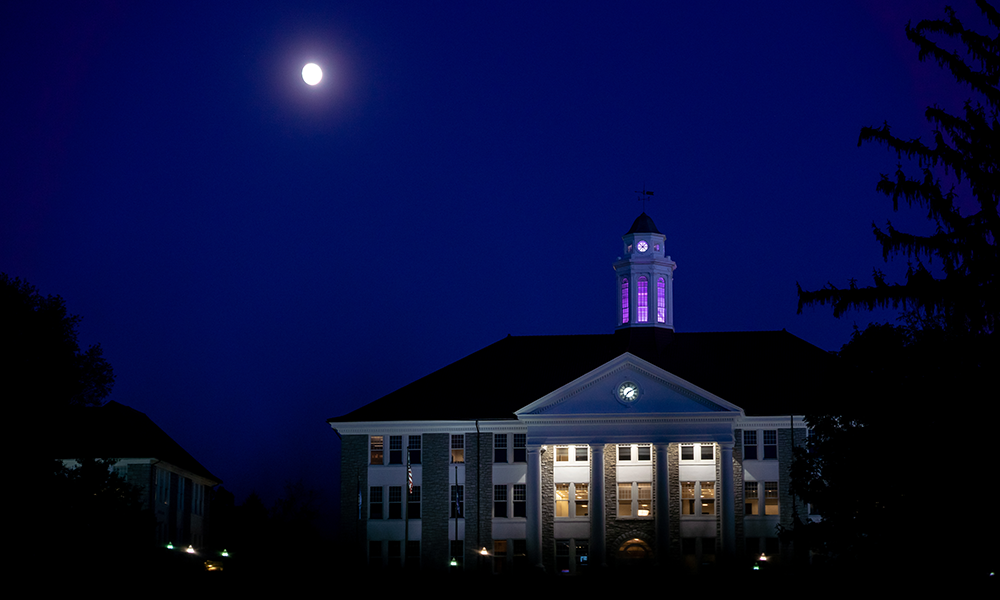The start of winter ushers in prime time for star gazers
JMU News
Harrisonburg, Virginia — With the winter solstice arriving Tuesday, it’s the perfect time to grab a pair of binoculars and check out the stars.
Lacking the humidity of summertime, central Shenandoah Valley winters provide the clearest views of the stars, the moon and other celestial objects in the night sky, said Geary Albright, director of the John C. Wells Planetarium at James Madison University.
For the best viewing inside the city limits, Albright recommends finding an open space such as a school playground. “If you get into an open area, your horizon is lower so you’re going to have less interference from trees and things like that,” he said. You also want to find a spot that is as dark as possible.
With High Knob and Reddish Knob a short drive away, Valley star enthusiasts have some optimal vantage points. Reddish Knob is one of the darkest places on the East Coast, Albright said, and “the Milky Way goes right overhead in the wintertime and it’s a great place to watch a rising full moon."
In addition to longer periods of darkness and more transparent skies, wintertime features some of the brightest and most recognizable constellations, such as Canis Major, Gemini, Orion and Taurus. Orion is the brightest constellation and has the most stars, Albright said, and the brightest star in the sky, Sirius, is nearly in line with Orion’s belt.
With so much to look at, Albright suggests taking along a planisphere, a small map of the sky. “It’s really best to have some kind of a little chart that you can set for the date and the time. That becomes an indispensable tool for actually finding things,” he said.
Planispheres are relatively easy to make with materials and instructions that can be found on the internet. They can also be purchased.
Albright said he enjoys watching the planets that show up in the winter sky. Venus, Saturn and Jupiter can be spotted this time of year in the southwest sky just after sunset.
“The things that are usually really pretty are conjunctions, when the moon is near a planet or something like that so you see two things together,” Albright said. “Full moons are always nice to see.”
And International Space Station flyovers too, which Albright lets people know about on the planetarium Facebook and Instagram pages.
Until further notice, Wells Planetarium shows and star talks are postponed.
###
Contact: Eric Gorton, gortonej@jmu.edu, 540-908-1760
